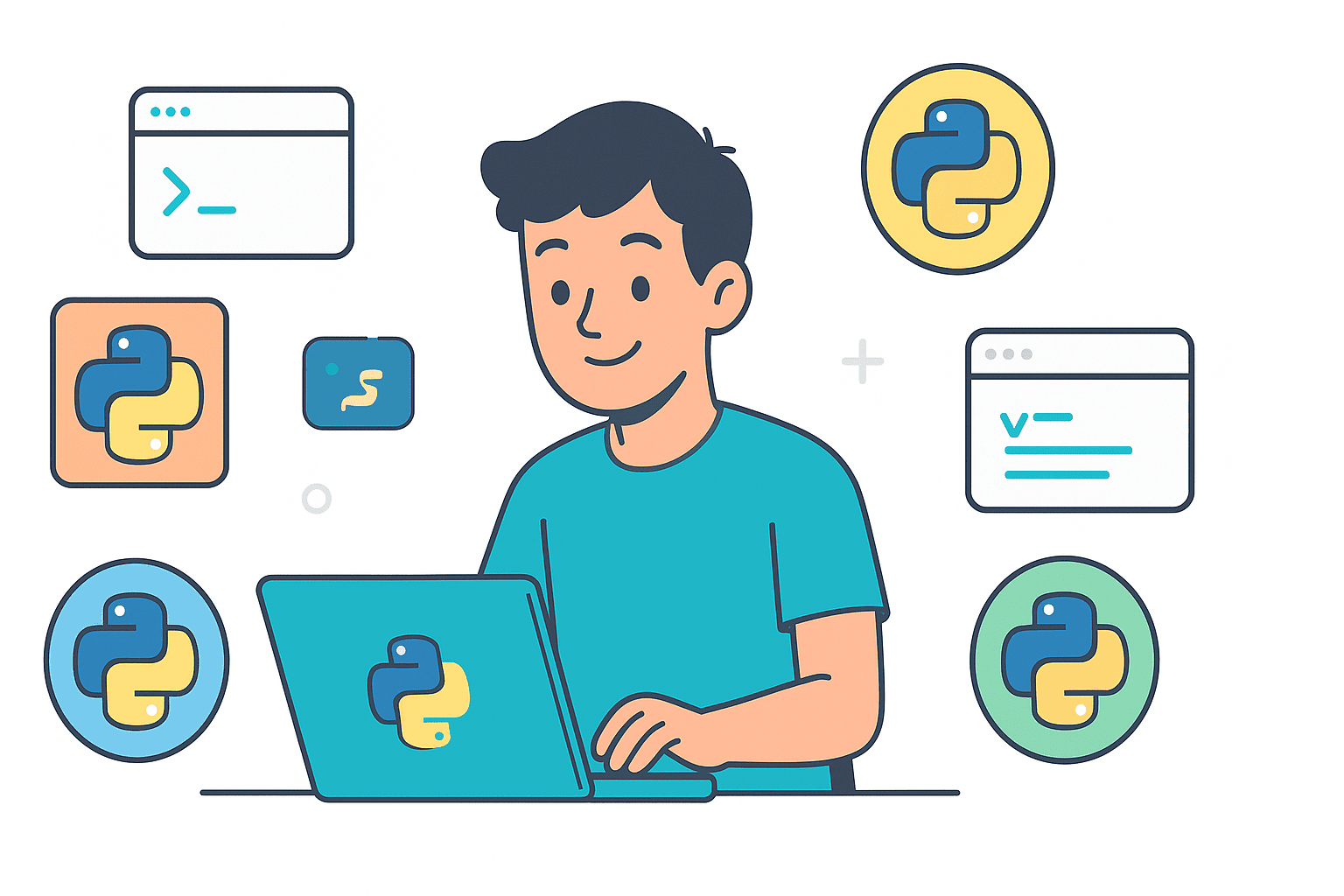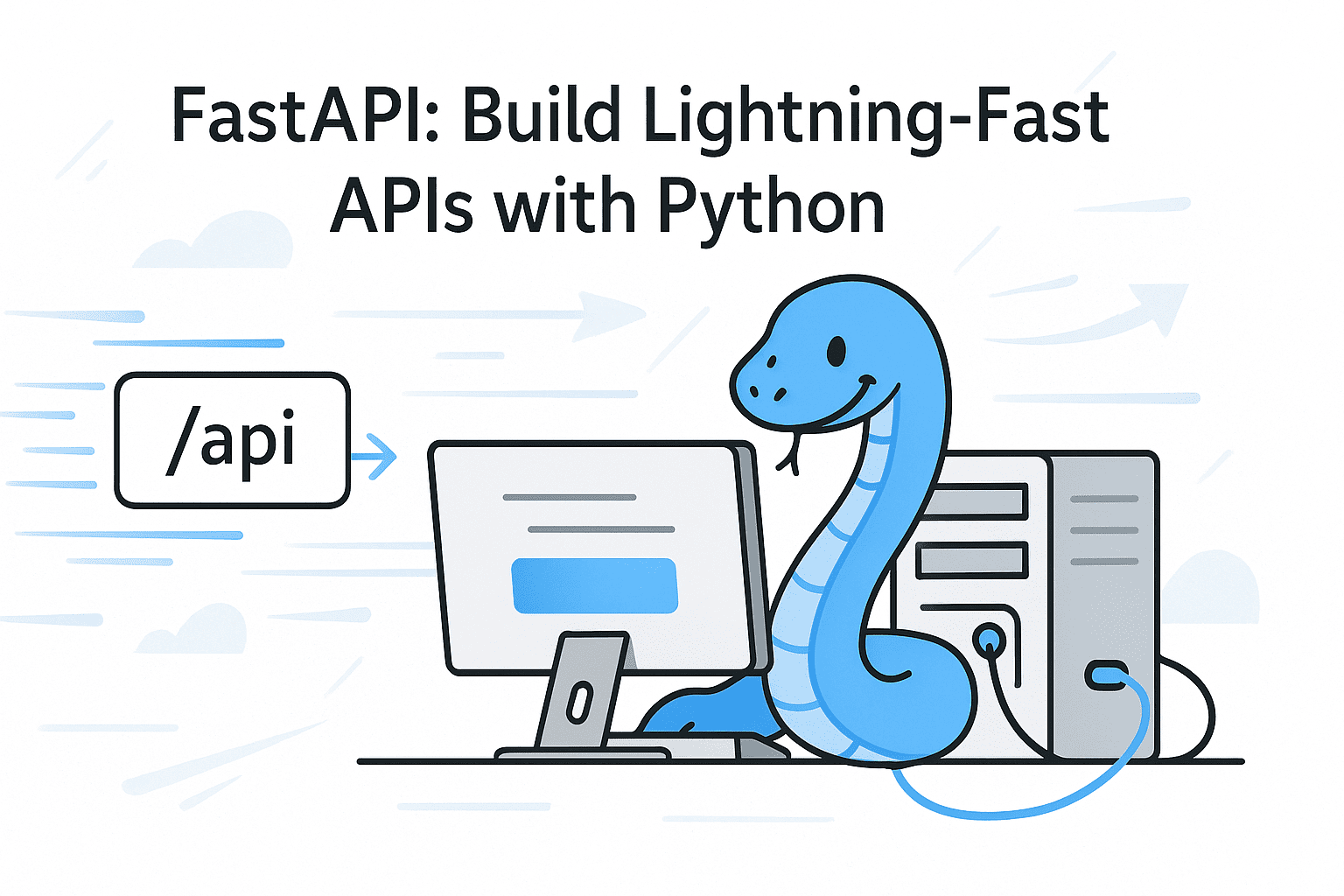If you’re a developer juggling multiple Python projects, chances are you’ve hit the “wrong Python version” wall. One project needs Python 3.7, another needs 3.11 — and your system Python just isn’t cutting it.
Enter Pyenv — the ultimate tool to install, manage, and switch between multiple Python versions seamlessly.
In this crash course, we’ll cover
- ✅ What Pyenv is and why you need it
- ⚙️ How to install and set it up on macOS, Linux, and Windows
- 🧠 Common commands and workflows
- 🧩 Integrations with virtual environments
- 💡 Troubleshooting tips
Let’s dive in.
What is Pyenv?
Pyenv is a lightweight Python version management tool that lets you:
- Install multiple Python versions side-by-side
- Switch versions globally, per-shell, or per-project
- Avoid conflicts with your system Python
Think of it as Node Version Manager (nvm) — but for Python.
💡 Pyenv doesn’t replace virtual environments — it works with them. You use Pyenv to manage Python installations, and venv or virtualenv to manage dependencies.
How Pyenv Works (Under the Hood)
When you install Pyenv, it:
- Inserts a shim layer in your $PATH before the system Python.
- Redirects any call to python, pip, etc., to the correct Python version you’ve set.
Example:
$ pyenv global 3.11.6
$ python --version
Python 3.11.6
Magically, all Python commands now use your specified version — no system hacks needed.
Installation Guide
Let’s go OS by OS.
macOS Setup
Step 1: Install dependencies
Use Homebrew:
brew update
brew install pyenv
Step 2: Add Pyenv to your shell
For zsh (default on macOS):
echo 'eval "$(pyenv init --path)"' >> ~/.zprofile
echo 'eval "$(pyenv init -)"' >> ~/.zshrc
Then restart your terminal.
Step 3: Install Python versions
pyenv install 3.11.6
pyenv install 3.9.18
Step 4: Set your global (default) version
pyenv global 3.11.6
Linux Setup
Step 1: Install dependencies using Package Manager
For Ubuntu/Debian:
sudo apt update
sudo apt install -y build-essential curl git \
libssl-dev zlib1g-dev libbz2-dev libreadline-dev \
libsqlite3-dev wget llvm libncurses5-dev libffi-dev \
liblzma-dev python3-openssl tk-dev
Step 2: Install Pyenv
curl https://pyenv.run | bash
Step 3: Add Pyenv to your shell
echo 'export PATH="$HOME/.pyenv/bin:$PATH"' >> ~/.bashrc
echo 'eval "$(pyenv init --path)"' >> ~/.bashrc
echo 'eval "$(pyenv init -)"' >> ~/.bashrc
source ~/.bashrc
Step 4: Install Python
pyenv install 3.10.14
pyenv global 3.10.14
Windows Setup (via pyenv-win)
For Windows, Pyenv is available as pyenv-win.
Step 1: Install via PowerShell
Run PowerShell as Administrator:
Invoke-WebRequest -UseBasicParsing -Uri "https://pyenv.run" -OutFile "./pyenv-win/install.ps1"
Set-ExecutionPolicy -ExecutionPolicy RemoteSigned -Scope CurrentUser
./pyenv-win/install.ps1
Step 2: Add Pyenv to PATH
Make sure these are in your environment variables:
%USERPROFILE%\.pyenv\pyenv-win\bin
%USERPROFILE%\.pyenv\pyenv-win\shims
Step 3: Install a Python version
pyenv install 3.11.5
pyenv global 3.11.5
Then verify:
python --version
Common Pyenv Commands
| Command | Description |
|---|---|
| pyenv install --list | Show all available Python versions |
| pyenv install 3.11.6 | Install a specific version |
| pyenv uninstall 3.10.14 | Remove a version |
| pyenv versions | List installed versions |
| pyenv global 3.11.6 | Set global (system-wide) version |
| pyenv local 3.9.18 | Set version for the current project |
| pyenv shell 3.8.10 | Temporarily set version for this shell session |
Bonus: Pyenv + Virtualenv
You can combine Pyenv with pyenv-virtualenv for per-project environments:
brew install pyenv-virtualenv
pyenv virtualenv 3.11.6 myenv
pyenv activate myenv
Deactivate with:
pyenv deactivate
This is great for isolating project dependencies while keeping version control simple.
Troubleshooting
“Command not found: pyenv”
Make sure you’ve added Pyenv to your shell profile (.zshrc, .bashrc, etc.) and restarted the terminal.
“Python build failed”
Check dependencies. On Ubuntu:
sudo apt install -y build-essential libssl-dev zlib1g-dev
Can’t switch versions?
Run:
pyenv rehash
This rebuilds shims and fixes PATH conflicts.
Integrate with IDEs
In VS Code, set your interpreter:
Command Palette → Python: Select Interpreter → Choose from pyenv versions
PyCharm, Sublime Text, and others detect Pyenv-managed interpreters automatically.
Conclusion
Managing Python versions manually is a recipe for chaos. With Pyenv, you get:
- Clean version isolation
- Seamless switching
- A simple, developer-friendly workflow
Whether you’re on macOS, Linux, or Windows — Pyenv is the easiest way to stay sane across projects.
🚀 Start managing Python like a pro — your future self (and your CI/CD pipeline) will thank you.
🤝 Need a Custom RSVP System or Dashboard?
I help businesses build tools that actually work , even on tight deadlines.
Whether you're planning an event, need internal tools, or want a custom dashboard for your team , I can help.
Reach out
📧 Email: safi.abdulkader@gmail.com | 💻 LinkedIn: @abdulkader-safi | 📱 Instagram: @abdulkader.safi | 🏢 DSRPT
Drop me a line, I’m always happy to collaborate! 🚀



